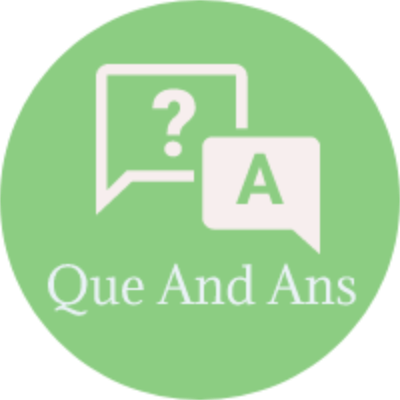Microprocessor – Short Questions And Answers Set-7
 Hello Friends Here in this section of Microprocessor Short Questions and Answers,We have listed out some of the important Short Questions with Answers which will help students to answer it correctly in their University Written Exam.
Hello Friends Here in this section of Microprocessor Short Questions and Answers,We have listed out some of the important Short Questions with Answers which will help students to answer it correctly in their University Written Exam.
Lets have a look at below Lists of Short Descriptive type Questions that may be asked in this format in Written Exams.
1. What is the drawback in machine language and assembly language programs?
The machine language and assembly language programs are machine dependent. The programs developed using these languages for a particular machine cannot be directly run on another machine.
2. What is a bus?
Bus is a group of conducting lines that carries data, address and control signals.
3. Why data bus is bi-directional?
The microprocessor has to fetch (read) the data from memory or input device for processing and after processing, it has to store (write) the data to memory or output device. Hence the data bus is bidirectional.
4. Why address bus is unidirectional?
The address is an identification number used by the microprocessor to identify or access a memory location or I / O device. It is an output signal from the processor. Hence the address bus is unidirectional.
5. What is the function of microprocessor in a system?
The microprocessor is the master in the system, which controls all the activity of the system. It issues address and control signals and fetches the instruction and data from memory. Then it executes the instruction to take appropriate action.
6. What is the need for timing diagram?
The timing diagram provides information regarding the status of various signals, when a machine cycle is executed. The knowledge of timing diagram is essential for system designer to select matched peripheral devices like memories, latches, ports, etc., to form a microprocessor system.
7. How many machine cycles constitute one instruction cycle in 8085?
Each instruction of the 8085 processor consists of one to five machine cycles.
8. Define opcode and operand.
Opcode (Operation code) is the part of an instruction / directive that identifies a specific operation.Operand is a part of an instruction / directive that represents a value on which the instruction acts.
9. What is opcode fetch cycle?
The opcode fetch cycle is a machine cycle executed to fetch the opcode of an instruction stored in memory. Every instruction starts with opcode fetch machine cycle.
10. How many machine cycles does 8085 have, mention them?
In 8085 have 9 machine cycles, they are opcode fetch, memory read, memory write, I/O read, I/O write,Interrupt acknowledge, halt, hold & reset.
11. How does the microprocessor differentiate between data and instruction?
When the first m/c code of an instruction is fetched and decoded in the instruction register, the microprocessor recognizes the number of bytes required to fetch the entire instruction. For example MVI A, Data, the second byte is always considered as data. If the data byte is omitted by mistake whatever is in that memory location will be considered as data&thebyteafterthe“data”willbetreated as the next instruction.
12. What is meant by polling?
Polling or device polling is a process which identifies the device that has interrupted the microprocessor.
13. What is meant by interrupt?
Interrupt is an external signal that causes a microprocessor to jump to a specific subroutine
14. Compare CALL and PUSH instructions
CALL PUSH
1.When CALL is executed the
microprocessor automatically
stores the 16-bit address of the
instruction next to CALL on
the stack.
2.When CALL is executed the
stack pointer is decremented by
two
1.PUSH The
programmer uses the
instruction to save the
contents of the register
pair on the stack
2. When PUSH is
executed the stack
pointer is decremented
by two
15. What is a programmable peripheral device?
If the functions performed by a peripheral device can be altered or changed by a program instruction then the peripheral device is called programmable device. Usually the programmable devices will have control registers. The device can be programmed by sending control word in the prescribed format to the control register.
16. What is synchronous data transfer scheme?
For synchronous data transfer scheme, the processor does not check the readiness of the device after a command has been issued for read/write operation. Fu this scheme the processor will request the device to get ready and then read/W1.ite to the device immediately after the request. In some synchronous schemes a small delay is allowed after the request.
17. What is asynchronous data transfer scheme?
In asynchronous data transfer scheme, first the processor sends a request to the device for read/write operation. Then the processor keeps on polling the status of the device. Once the device is ready, the processor executes a data transfer instruction to complete the process.
18. What are the internal devices of 8255?
The internal devices of 8255 are port-A, port-B and port-C. The ports can be programmed for either input or output function in different operating modes.
19. What is USART?
The device which can be programmed to perform Synchronous or Asynchronous serial communication is called USART (Universal Synchronous Asynchronous Receiver Transmitter). The INTEL 8251A is an example of USART.
20. What are the functions performed by INTEL 8251A?
The INTEL 825lA is used for converting parallel data to serial or vice versa. The data transmission or reception can be either asynchronously or synchronously. The 8251A can be used to interface MODEM and establish serial communication through MODEM over telephone lines.